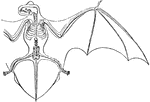
Skeleton and Wing Membranes of the Noctule Bat
The bat genus Nyctalus (Noctule bats) are Evening bats. They are distributed in the temperate and subtropical…
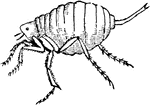
Chigoe Flea (Male)
The chigoe flea (Tunga penetrans) is a parasitic arthropod found in tropical climates, especially South…
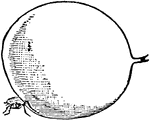
Chigoe Flea (Female)
The chigoe flea (Tunga penetrans) is a parasitic arthropod found in tropical climates, especially South…

Great Wall of China
The Great Wall of China is a series of stone and earthen fortifications in China, built, rebuilt, and…
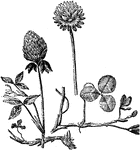
Clover
An illustration of white clover (left) and red clover (right). Clover (Trifolium), or trefoil, is a…
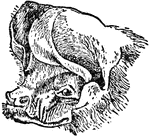
Head of Free-tailed Bat
The Big Free-tailed Bat (Nyctinomops macrotis) is a bat species found in South, North and Central America.
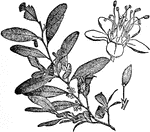
Coca Flower
Coca is a plant in the family Erythroxylaceae, native to north-western South America. The plant plays…
Coca Fruit
Coca is a plant in the family Erythroxylaceae, native to north-western South America. The plant plays…
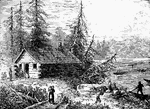
Early Settlers
During this early period Virginia's population grew with the introduction of settlers and servants into…
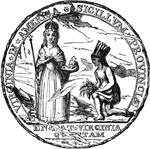
Colonial Seal of Virginia
The Colonial Seal of Virginia. An Indian kneels before a prominent royal figure.

Berkeley, Virginia (Near Harrison's Landing)
On December 4, 1619, a group of 38 English settlers arrived at Berkeley Hundred, about eight thousand…
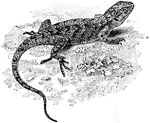
Eastern Fence Lizard
The Eastern fence lizard (Sceloporus undulatus) is a medium sized species of lizard common along the…
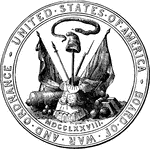
Seal of the Board of War and Ordnance
In 1776 the Board of War and Ordnance was created for issuing supplies to troops in the field, and the…
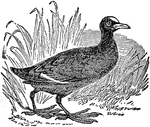
Coot
Coots , are medium-sized water birds which are members of the rail family Rallidae. They constitute…
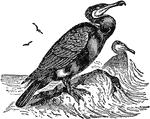
Double-crested Cormorant
The Double-crested Cormorant (Phalacrocorax auritus) is a member of the cormorant family of seabirds.…
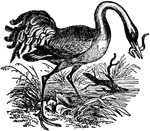
Crane
Cranes are large, long-legged and long-necked birds of the order Gruiformes, and family Gruidae. Unlike…

House Cricket Larva
An illustration of a house cricket larva. Acheta domesticus (house cricket) is a cricket native to Europe.…

House Cricket Pupa
An illustration of a house cricket pupa. Acheta domesticus (house cricket) is a cricket native to Europe.…
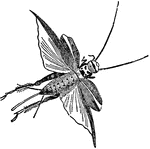
House Cricket
Acheta domesticus (house cricket) is a cricket native to Europe. Both sexes of this grey or brown cricket…
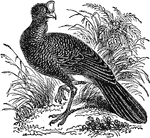
Curassow
Curassows are one of the three major groups of cracid birds. Three of the four genera are restricted…

Dahlia
An illustration of a single dahlia flower. Dahlia is a genus of bushy, tuberous, perennial plants native…
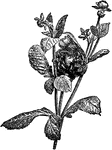
Dahlia
An illustration of a double variety dahlia flower. Dahlia is a genus of bushy, tuberous, perennial plants…
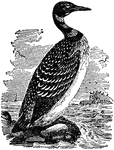
Great Northern Diver
The Great Northern Diver, known in North America as the Common Loon (Gavia immer), is a large member…
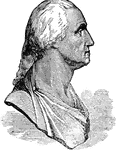
Houdon's Bust of Washington
Bust of George Washington by Jean-Antoine Houdon. George Washington (February 22, 1732 — December…

Combined Arms of the Washington Family
The coat of arms of George Washington, President of the United States of America from 1789 to 1797,…
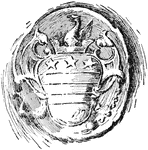
Washington's Seal (From a Letter to Bouquet, 1758)
Washington's Seal incorporates the same design which can be found in Washington's Arms. The coat of…
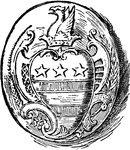
Washington's Private Seal, 1783
Washington's Private Seal incorporates the same design which can be found in Washington's Arms. The…

Washington Arms
The coat of arms of George Washington, President of the United States of America from 1789 to 1797,…
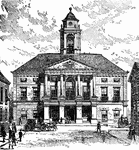
Federal Hall, 1789
Federal Hall, located at 26 Wall Street in New York City, was the first capitol of the United States…
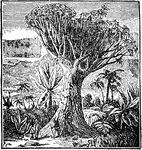
Dracaena
Dracaena is a genus of about 40 species of trees and succulent shrubs classified in the family Ruscaceae…
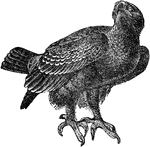
Screamer
The Screamers are a small family of birds, the Anhimidae.The three species occur only in South America,…
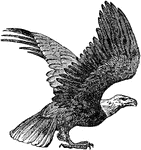
Bald Eagle
The Bald Eagle (Haliaeetus leucocephalus) is a bird of prey found in North America that is most recognizable…
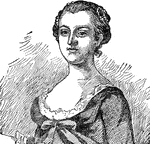
Martha Custis Washington
Martha Custis Washington (June 2, 1731 – May 22, 1802) was the wife of George Washington, the…
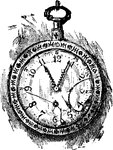
Martha Washington's Bridal Watch
Watch belonging to Martha Custis Washington (June 2, 1731 – May 22, 1802), the wife of George…

Martha Washington's Teacup
One of many teacups belonging to Mrs. Washington. A teacup is a small cup with a handle, generally a…
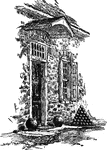
Entrance to Washington's Headquarters, Newburgh
Hasbrouck House served as Washington's headquarters during the Revolutionary War from April 1782 until…
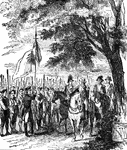
Washington Taking Command of the Army
Although he did not explicitly seek the office of commander and even claimed that he was not equal to…

Mackinaw from Round Island
Fort Michilimackinac or Fort Mackinaw was an 18th century French, and later British, fort and trading…
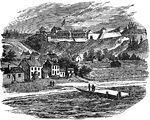
Fort Mackinaw
Fort Michilimackinac or Fort Mackinaw was an 18th century French, and later British, fort and trading…
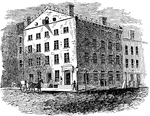
Fraunces Tavern
In August of 1775, Americans took possession of cannons from the Battery at the tip of Manhattan and…
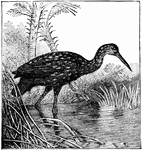
Limpkin
The Limpkin (Aramus guarauna) is a bird in the Aramidae family that is found in the Caribbean, Central…
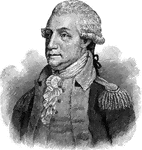
George Washington (1789)
The Electoral College elected Washington unanimously in 1789, and again in the 1792 election; he remains…

Communion Plate Presented by Queen Anne
During the reign of Queen Anne a valuable communion set was presented by her Majesty to the Mohawk chapel…
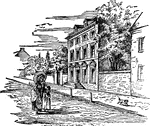
The President's House in Philadelphia (1794)
This house, located on the 500 block of Market Street, served as the executive mansion of the United…
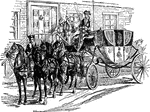
The President's Equipage
An elegant horse-drawn carriage with its retinue of servants is an equipage.
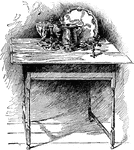
George Washington's Breakfast Table
The table at which President George Washington sat to eat his breakfast.

Great Earthwork near Newark, Ohio
An unknown people inhabited the central portion of North America at an unknown period in its history.…

Seal of New Netherland
New Netherland, 1614–1674, is the name of the former Dutch territory on the eastern coast of North…
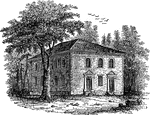
Pohick Church
Pohick was the first permanent church in the colony to be established north of the Occoquan River, sometime…
![John Wesley (28 June [O.S. 17 June] 1703 – 2 March 1791) was an Anglican cleric and Christian theologian who was the founder of the (Evangelical) Arminian Methodist movement. "Methodism" was originally an unflattering nickname of the "Holy Club" at Oxford University founded by Charles Wesley but led by brother John. Methodism was well advanced in England through George Whitefield who had taken over the responsibility of the Holy Club while the Wesley brothers were in Savannah, Georgia British North America.](https://etc.usf.edu/clipart/57500/57587/57587_john_wesley_mth.gif)
John Wesley
John Wesley (28 June [O.S. 17 June] 1703 – 2 March 1791) was an Anglican cleric and Christian…
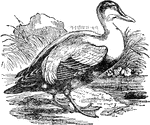
Eider Duck
The Common Eider, Somateria mollissima, is a large (50-71cm body length) sea-duck, which is distributed…
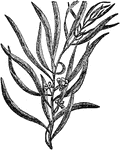
Eucalyptus
Eucalyptus is a diverse genus of trees (and a few shrubs), the members of which dominate the tree flora…

Eupatorium cannabinum
Eupatorium cannabinum, commonly known as Hemp-agrimony, is a herbaceous plant of the family Asteraceae.…
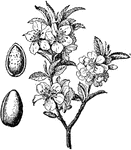
Almond Tree and Fruit
The almond is native to Iran, from northwestern Saudi Arabia, north through western Jordan, Israel,…

Crocus
Crocus (plural: crocus, crocuses) is a genus of perennial flowering plants, native to a large area from…

Valerian
Valerian (Valeriana officinalis, Valerianaceae) is a hardy perennial flowering plant, with heads of…
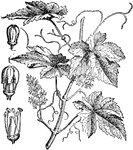
European Grape
Vitis vinifera (Common Grape Vine) is a species of Vitis, native to the Mediterranean region, central…
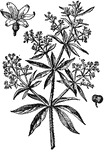
Madder
Madder is the common name of the plant genus Rubia, the type genus of the madder family Rubiaceae. The…
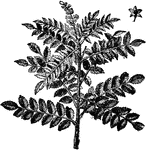
Tanner's Sumac Branch
Sumac is any one of approximately 250 species of flowering plants in the genus Rhus and related genera,…
